- Impact Club & Ball Speed & Impact Ratio
- Face Angle & Face Rotation during the Impact Zone
- Face Twist (Face deflection as a result of impact!)
- Putter Path, Face to Path Angle during Impact
- Lie, Attack and Shaft Angle
- Ball Speed during the first 16/20 inches of the putt (how does the ball slow down?)
- Launch Angle, Surface Interaction & Vertical Bounce
- Skid, Backspin & Roll (Angular rotation & RPM)
- Hook, Slice & Rifle Spin
- The point of Zero Skid / Time to Zero Skid / Ball Speed at Zero Skid
- The average of up to 200 putts including the range & standard deviation, for easy comparison of putters and putting technique
- Create a PDF / Excel summary report for your clients or R&D analysis
Our Technology
Our Technology
"We have made continual investment in the latest golf coaching technology and offer an unrivalled level of technological capabilities for golf coaching and development in East Anglia."


We use the Trackman 4 golf launch monitor in all of our golf lessons and custom fittings.
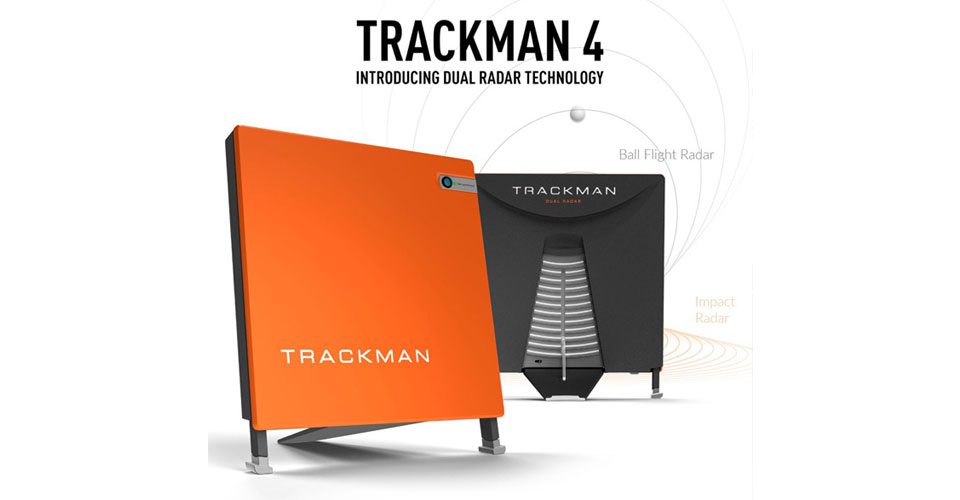
Dual Radar Technology
Trackman 4 uses dual radar technology. It has two radar systems. The first radar system tracks everything the club does before, during, and after impact. It records data from commonly known parameters like Club Path and Face Angle to Swing Direction and Spin Loft. The secondary radar tracks the full ball flight from launch to landing and everything in between.
With the use of Trackman and a correctly fitted club you can see an improvement in all of these areas:

Club Path
A positive value means the club is moving to the right of the target at impact (“in-to-out” for a right-handed golfer) and a negative value means it is moving to the left of the target (“out-to-in” for a right-handed golfer). To hit a straight shot, the club path should be zero. The club path is part of what influences the curvature of the shot. It also is part of what determines the ball’s starting direction.
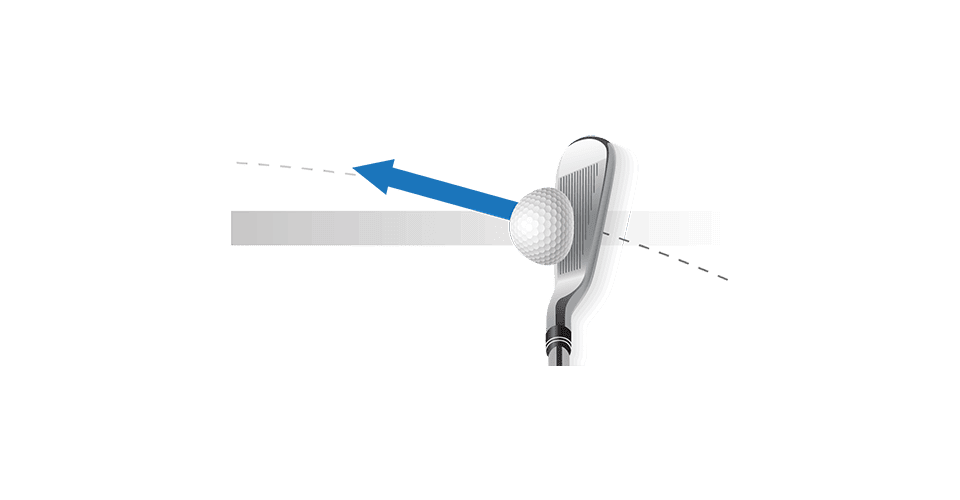
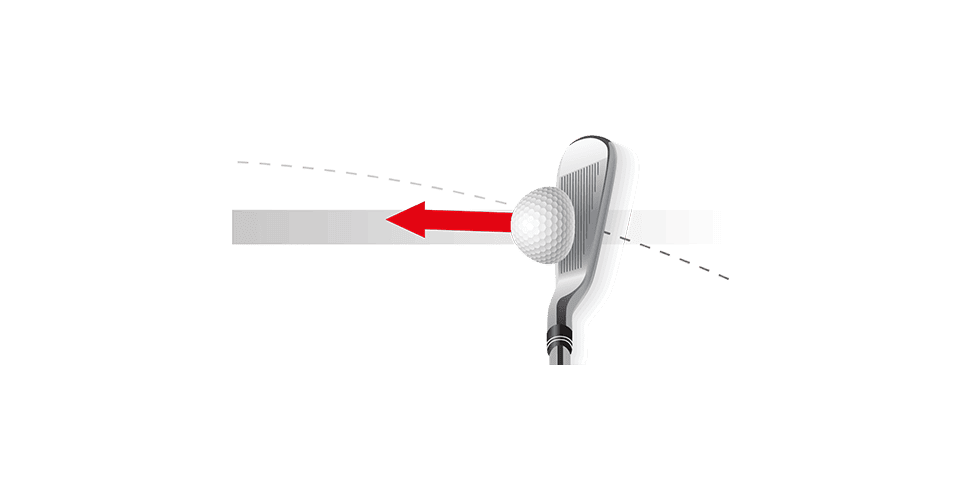
Face Angle
Face Angle is the direction the club face is pointed (right or left) at impact. Most golfers refer to this as having an “open” or “closed” club face. A positive value means the club face is pointed to the right of the target at impact (“open” for a right-handed golfer) and a negative value means the club face is pointed to the left of the target (“closed” for a right-handed golfer).
Dynamic Loft
Dynamic Loft is the amount of loft on the club face at impact. The golfer’s attack angle, how the shaft bends, how the golfer releases the club head, whether the club face is open or closed to the club path, and where the ball makes contact on the club face can all impact the dynamic loft. Creating the proper dynamic loft for the golfer’s club speed is important to creating the optimal trajectory and maximizing carry. Too much dynamic loft can send the ball too high into the air and reduce the golfer’s distance. Too little dynamic loft can send the ball too low making the ball roll out excessively causing it difficult to judge distance.
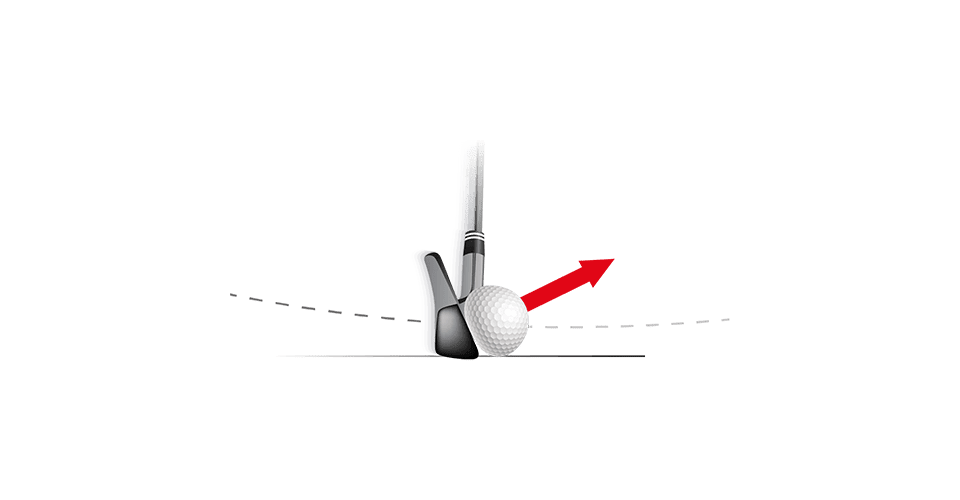

Attack Angle
Attack Angle is the direction the club head is moving (up or down) at impact. Shots hit off the ground should have a negative attack angle in order to create “ball first” contact. However, golfers with slower club speeds should be careful not to hit too much down (negative attack angle) with their irons. This will affect the golfer’s potential distance. To maximize distance with your driver, hitting up on the ball (positive attack angle) is a must. The driver’s loft should be chosen so that it complements the golfer’s attack angle. Having a positive attack angle does not guarantee maximum distance. The fit of the club is also an essential piece of the puzzle.
Club Speed
Club Speed determines a golfer’s potential distance Club Speed is the speed the club head is traveling immediately prior to impact. More club speed equals more potential distance. In fact, adding 1 mph of club speed can increase your distance by up to 3 yards with the driver. The highest recorded club speed is 150 mph! This was accomplished by two-time world long drive champion, Jamie Sadlowski.
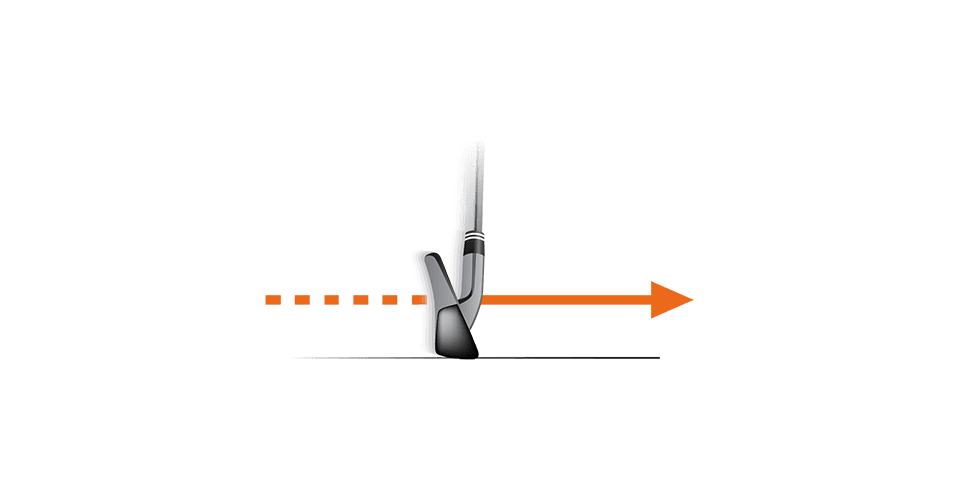
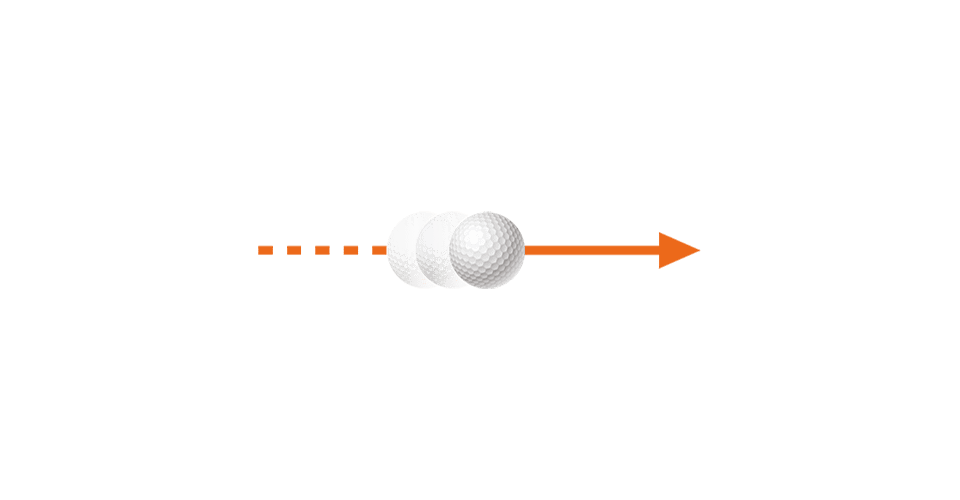
Ball Speed
Ball Speed is the speed of the golf ball immediately after impact Ball speed is created by club speed and impact. Bad impact such as shots hit on the toe or heel will reduce the potential ball speed. “Glancing blows” created by hooks, slices, and hitting too much down on the ball can also reduce the potential ball speed. Although a golfer’s club speed is key to potential distance, the ball speed that is created at impact is the biggest factor in how far the ball actually carries. Gaining 1 mph of ball speed can increase your driver distance by up to 2 yards. The highest recorded ball speed is 225 mph by former long drive champion Ryan Louw.
Carry
Carry is the distance the ball travels through the air. An important thing to know about carry is that the value is given for a landing area that is the same height as where the ball is hit from. Then the golfer can adjust for uphill and downhill shots on the course. This reason is why carry is sometimes referred to as “carry flat”. Using the club speed definition, we would expect the average male amateur to hit their driver as far as the average LPGA Tour player. However, the actual difference is more than 20 yards. Ball speed, launch angle, and spin rate must be optimized to reach a golfer’s potential distance. LPGA Tour players are some of the best in the world at optimizing these numbers and getting the most out of their club speed.
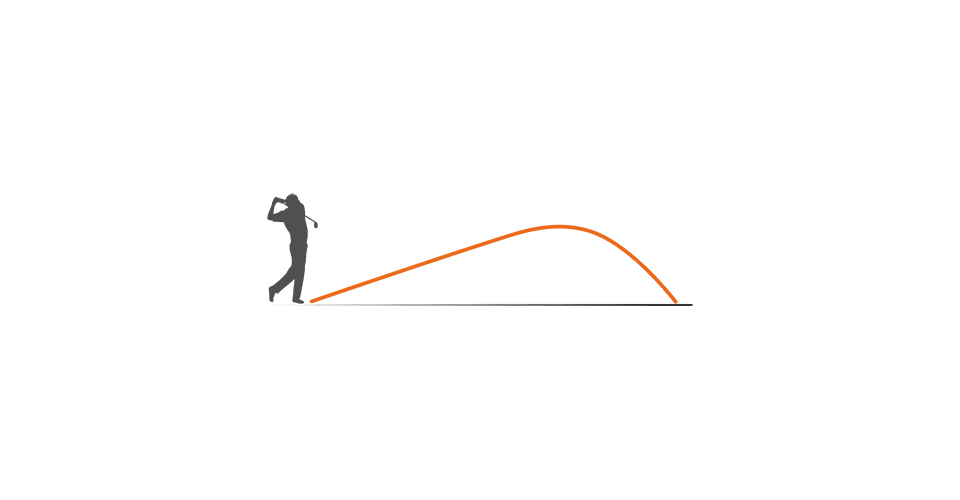

Launch Angle
Launch Angle is the angle the ball takes off at relative to the ground. Launch angle is highly correlated to dynamic loft. Launch angle will always be a little less than dynamic loft, but will have a similar value. Along with ball speed, launch angle is a primary component to determining the height and distance of a shot. Every golfer should be fitted to achieve the optimal balance of launch angle and spin rate based on their club speed and ball speed.
Smash Factor
Smash Factor is ball speed divided by club speed. Smash Factor relates to the amount of energy transferred from the club head to the golf ball. The higher the smash factor the better the energy transfer. A golfer would hope to achieve a smash factor near 1.50 on driver shots. That means for a 100 mph club speed the ball speed would be 150 mph. The higher the loft of the club, the lower the smash factor is expected to be. A PW should have a smash factor near 1.25. DRIVER EXAMPLE Golfer A has a club speed of 100 mph and a smash factor of 1.40. Golfer A’s ball speed is 140 mph. Golfer B has a club speed of 100 mph and a smash factor of 1.50. Golfer B’s ball speed is 150 mph. The 10 mph difference in ball speed between Golfer A and Golfer B equates to approximately 20 yards in distance between the two golfers even though they have the same club speed.
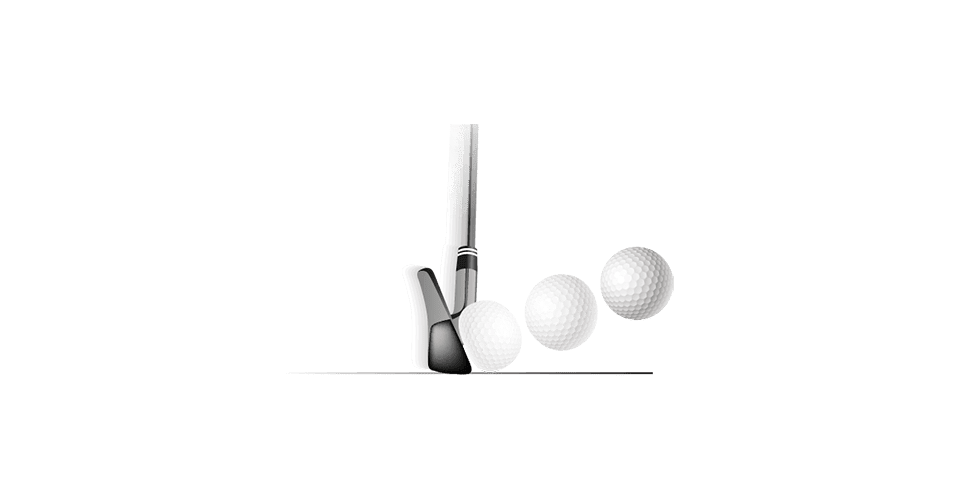

Spin Rate
Spin Rate is the amount of spin on the golf ball immediately after impact Spin rate has a major influence on the height and distance of a shot. Spin rate is one of the least appreciated numbers, especially in windy conditions. A high spin rate is the enemy, particularly when hitting in to the wind. One way to reduce spin is to hit a lower lofted club. Practice taking one or two clubs more (5 iron instead of 7 iron) and swing easier. This will help you control your ball flight and distance. More loft generally increases spin rate. All things being equal, more club speed will also increase spin rate. Read more about Spin in our Blog here!
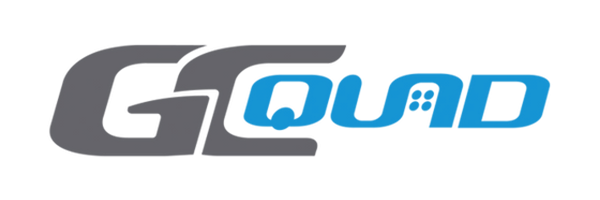
GC Quad is used on all our Putter Fittings as standard
The GCQuad is the world's most accurate, versatile, and complete launch monitor on the market and that is why we use it in our golf lessons here at Peter Field Golf!
The Ultimate Game Changer
Building on the cutting-edge innovation of its GC2 predecessor, the GCQuad’s advanced imaging technology and lightning-fast processor power the most precise, versatile camera based launch monitor available today. The GCQuad. The game’s most advanced launch monitor.
Unmatched Analytics
Our patented Spherical Correlation™ analytics deliver measured values with greater accuracy, indoors or outdoors, than any other launch monitor available today.


Flawless Precision
Outdoors or indoors, the GCQuad now delivers the same level of insight to putting that you’ve come to expect with every other stick in your bag. Whether on the range or the indoor simulation studio, the unique attributes of your short game performance are delivered to the GCQuad’s outdoor-visible display or connected device in real-time.

Try the K-Motion Experience today in our Technology Coaching Suite
Coach Better. Train Better. K-Motion. Building better athletes through better movement. Add the world's first human motion learning system with 3D golf.

The 3D sensors are placed across the body using a chest vest, pelvis belt, arm strap, and glove clip. Compared to other 3D systems, this is non-intrusive and can be worn over normal golf clothing.
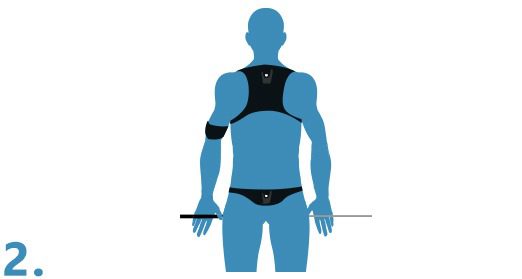
Now the player stands tall for a second to calibrate, assuring the best quality data capture. We are now all set up and ready to collect data, all within 5 minutes of you entering the room.
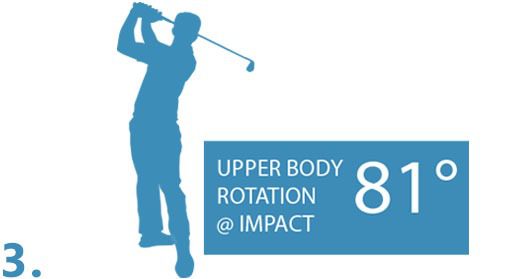
As you swing, the live 3D data appears on our screens, giving us real-time data and feedback. We can then dive into the graphs in more detail to assess how you are moving each segment through the golf swing.
3D Swing Vest Analysis
Using our 3D system, we can accurately track and measure how you move throughout your golf swing. 3D systems can be very complex and come with lengthy setup processes, however with our K-Motion system we can set up our sensors and accurately calibrate ready for measurements within 5 minutes.
Understand Your Path
The data we receive from the K-Motion 3D system helps us understand how you move throughout your swing. This data is very difficult to see or quantify using cameras alone, giving us measurable targets on how you can improve your motion. This improvement can be for speed production, efficiency of movement or injury prevention.
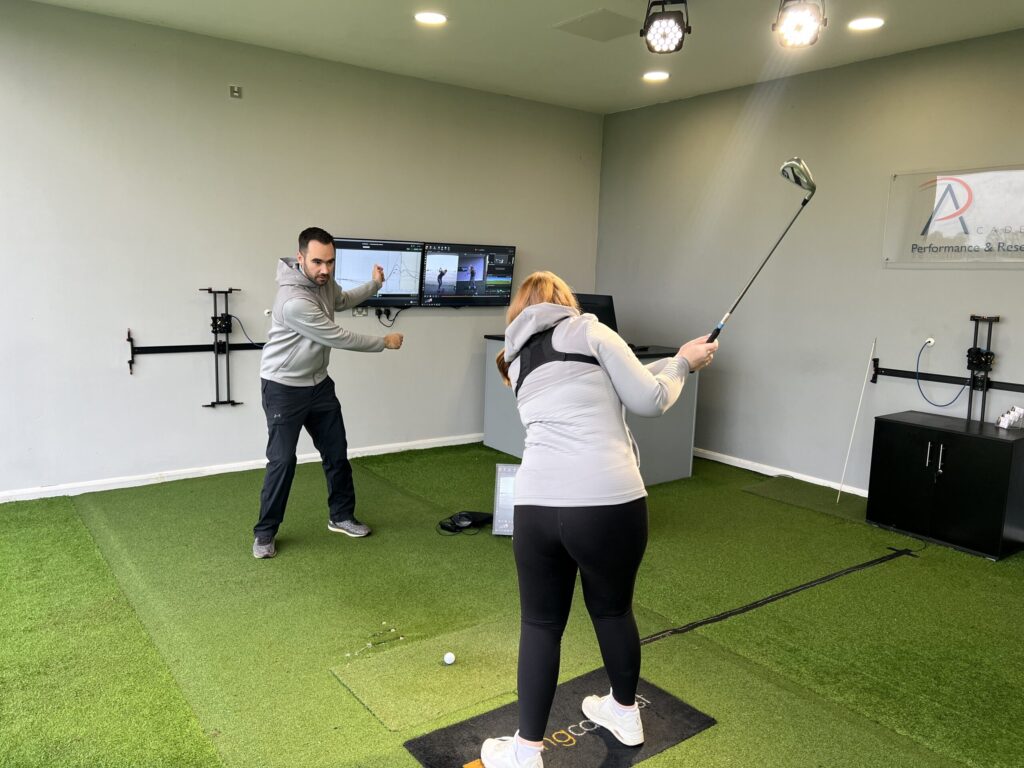
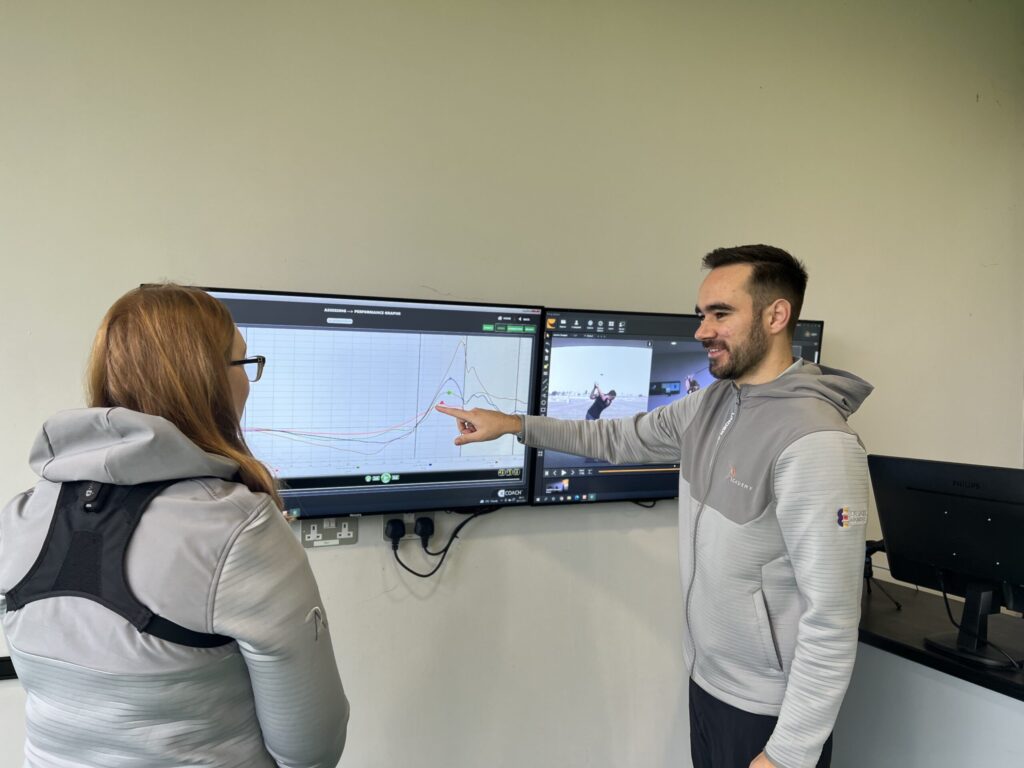
Learn Through Feel
With patented biofeedback coaching, you will learn the feel of a better swing, so you can do exactly what you need to move and swing better.
Practice Perfectly
Every rep of every drill is performed perfectly to accelerate muscle memory. Instead of asking if that is the correct movement, you can use the feedback to develop your own feel.
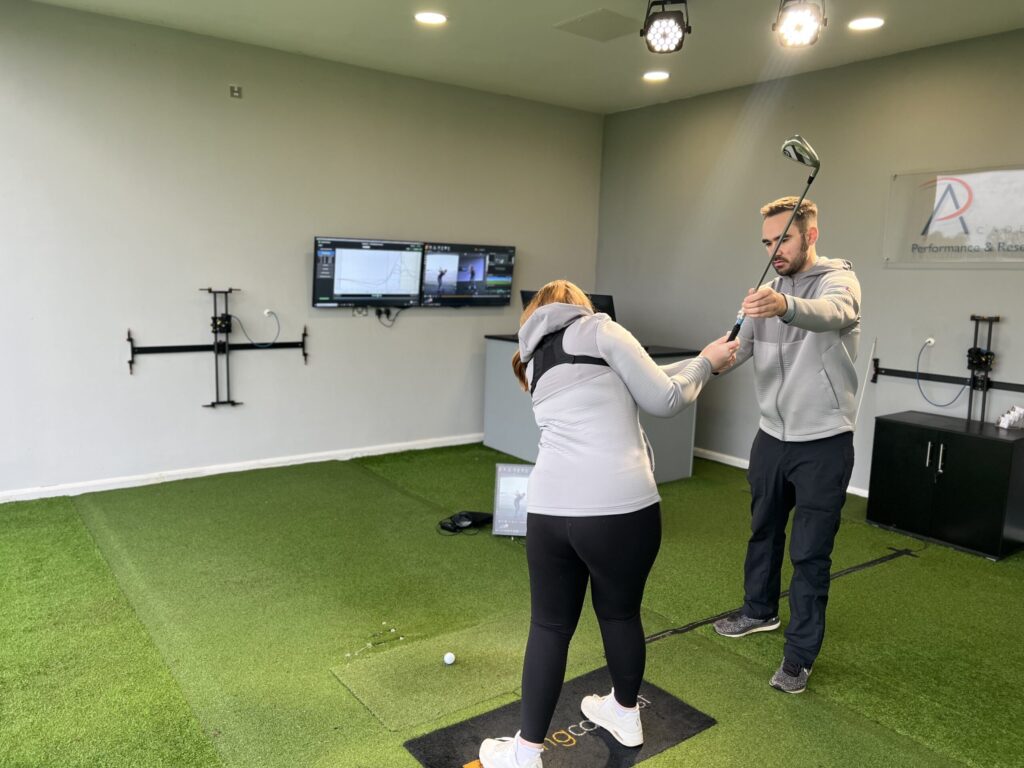
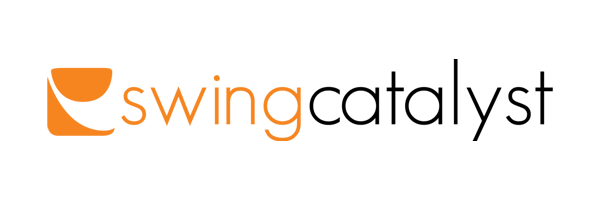
Praised by top coaches around the world.
Swing Catalyst is the preferred video analysis software, offering all the tools you need to fine-tune the golf swing.
Its all connected
Swing Catalyst analysis software make up the ecosystem that connects the golfer to the instructor. Instructors are now able to communicate directly with their students, while students can record their own swings and get a detailed swing analysis directly from the instructor.
Pressure shift and stance
The pressure distribution accurately depicts which part of your feet is undergoing the focus of your body’s pressure distribution. This means that you can easily spot whether you are leaning too far back, forward, left or right at any part of the swing. The Swing Catalyst Balance Plate provides an accurate measurement of stance width, calculated from the distance between each foot's anterior - posterior average.

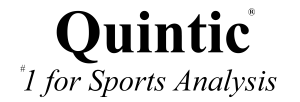
Putting Analysis Software Systems - Quintic Ball Roll
Quintic Ball Roll Systems offer fast and accurate information for both the club and ball, without any attachments affecting either the club or the player!
We are super excited to announce the latest addition to our technology here at Peter Field Golf, Quintic Pure Roll Putting.
Dr Paul Hurrion is a pioneer in putting technology, he is world renowned and respected for his creation of Quintic Pure Roll.
The Quintic system is widely used by many of the Industry leading brands when they are running research and development for new equipment. This very much adds testament to the credibility of the Quintic putting system.
We are one of a handful of businesses to have one. Since April we have been busy with staff training, learning how to best use it for both putting fitting and putting coaching.
If you feel you would like to learn more and see if we can help you save shots on the putting green, please do get in touch.

Quintic measures over 45 different parameters
"The Quintic Ball Roll Systems provide unique data on how your golf ball reacts after impact. This information is invaluable when custom fitting your putter or improving your putting stroke."
Padraig Harrington
Book a fitting
If you know what you need just click the 'BOOK A FITTING' button below to be taken to our custom fitting booking page. If you need a little help and want to discuss with us further give one of our team a call who will be happy to go through your particular requirements.


